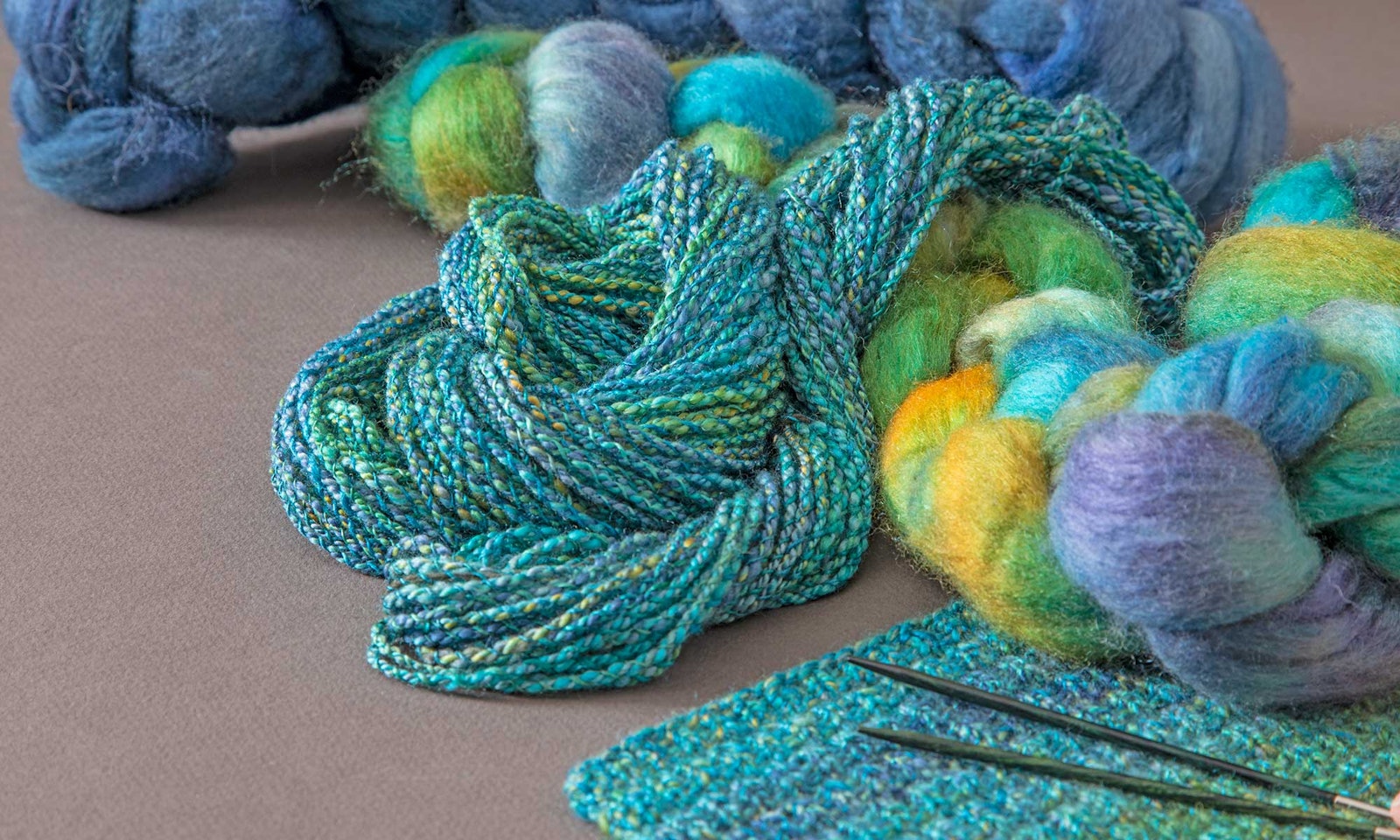Contents
Spinning is all about twist, and nowhere more so than when spinning to knit. Starting with the first stitch cast on the needles, a knitter is always adding to or removing twist from yarn. Building yarn with enough twist to stand up to knitting, frogging (even good knitters rip back!), finishing, and wear makes the difference between handspun, handknitted bliss and overspun or untwisted knitting.
We’ve collected some of our favorite tips, tricks, and tools to help you spin the perfect yarn for knitting. From choosing a cast-on that avoids untwisting your yarn tail to tips for building elastic cabled yarn, these articles are all about putting twist where you want it and keeping it there. Pair your beautifully elastic cabled yarn with a pattern for twisty Double-Cable Socks to Knit. Learn to twist a cable without a cable needle—and learn why another tool, the Twist-Angle Tool, can help you spin more consistent and evenly twisted yarn for any purpose.
Cheers!
–Spin Off editors
A Spinner’s Cast-On
By Rebecca Harmon
Spinners occasionally lament that their S-plied yarn tail untwists during the long-tail cast-on. This also happens with commercial yarns that are S-plied.
 Learn a new cast-on for knitting with S-plied yarns. Photo by Sophie Janotta from Pixabay
Learn a new cast-on for knitting with S-plied yarns. Photo by Sophie Janotta from Pixabay
In the long-tail cast-on, the front yarn, which is the cut end (or the tail) is made into a twisted loop, through which a loop of the back yarn (the ball yarn) is pulled. The ball yarn ends up as a series of loops on the needle and the tail yarn forms a series of twisted loops, like consecutive cursive e’s. It is the act of twisting the tail yarn into a loop that adds or subtracts twist from the tail. Even a tightly twisted yarn will almost completely untwist into separate plies if a large number of stitches are being cast on.
Try A Modified Long-Tail Cast-On
By twisting the tail loop in the opposite direction, one can add twist with each loop instead of subtracting it. On occasion, I have tried twisting the tail after each six to ten cast-on stitches, which helps but is inconvenient to do. Then one day I decided to try looping the yarn in the opposite direction. It worked, and I now use this cast-on whenever I am working with S-plied yarn because it prevents the sloppy appearance of the un-plied strand in the base of the cast-on.
How to work the modified long-tail cast-on:

